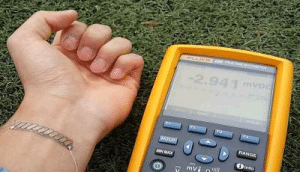
Researchers have developed a new thermoelectric generator that could replace batteries as a more versatile power source.
As interest grows in wearable electronics like Google Glass, smartwatches and fitness trackers, finding a suitable, long-lasting reliable power supply for these devices becomes an increasingly important concern for designers.
Now, a team of researchers from the Korea Advanced Institute of Science and Technology (KAIST) have developed a glass fabric-based thermoelectric generator that is extremely light and flexible and produces electricity from the heat of the human body.
Currently, two types of thermoelectric generators exist that are based on either organic or inorganic materials. The organic-based thermoelectric generators use flexible polymers that are compatible with human skin, but have a low power output. Inorganic-based thermoelectric generators in contrast produce adequate electrical energy, but are heavy, rigid and bulky.
The new technique developed by KAIST researchers effectively balances the two, yielding a flexible thermoelectric generator that minimizes thermal energy loss while maximizing power output, says Byung Jin Cho, a professor of electrical engineering at KAIST. Cho and his team synthesized liquid-like pastes of n-type (Bi2Te3) and p-type (Sb2Te3) TE materials and printed them onto a glass fabric using a screen printing technique. The pastes soaked through and combined with the fabric, forming films of thermoelectric materials measuring several hundred microns thick. According to Cho, the films are self-sustaining and do not require the thick external substrates used to hold inorganic thermoelectric materials.
“For our case, the glass fabric itself serves as the upper and lower substrates of a TE generator, keeping the inorganic TE materials in between,” he said. “This is quite a revolutionary approach to design a generator. In so doing, we were able to significantly reduce the weight of our generator (~0.13g/cm2), which is an essential element for wearable electronics.”
Tests indicate KAIST’s thermoelectric generator will produce around 40 mW electric power based on a temperature difference of 31°F between human skin and the surrounding air. The researchers envision number of applications beyond wearable devices, including automobiles, factories, aircraft and applications where a high amount of thermal energy is being wasted.





